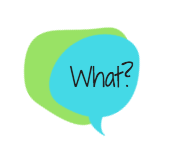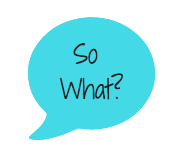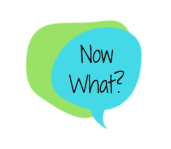October brings us midway through the school term, and partway through our project, working with the Vancouver Food Asset Map. In this post, we reflect upon our past, present, and future objectives and strategies that will allow us to achieve the next steps in our project. Further, using a “What? So what? Now what?” framework, we analyze a moment of significant that we have encountered working as a group.
Our Proposal Report: kitchenaccessproposal
Weekly Objectives and Achievements
Objective #1: Familiarizing ourselves with the project
Achievements:
- We have met up with our community partners.
- We have created a team charter in order to keep us organized and focused.
- We each have read through our project description and all the documents sent by Teya.
- We have and will remain in contact with Teya.
- The proposal report helped us understand our project by putting it into words and for every member of our group to gain a clear understanding of the significance, objectives, and methods of our project.
Objective #2: Create an action plan with goals, following the proposal report.
Achievements:
- Working on our second blog posting together allowed us to regroup and discuss our completed objectives and achievements while also discussing ongoing and future objectives and achievements.
- We have been constantly checking in with each other and contacting each other through Facebook chat and meeting up during flexible learning sessions to work on our project.
Objective #3: Stay up to date with lecture readings to further our knowledge of community asset based development and food related issues such as food security and food justice.
Achievements:
- We used the past readings to gain a better understanding of the context and overview of the course in relation to our project.
- More specifically, two of our course readings stood out to us more. We referred to these readings so far in our project:
- A Warm Meal and a Bed: Intersections of Housing and Food Security in Vancouver’s Downtown Eastside by Christiana Miewald and Aleck Ostry
Objective #4: Ongoing data collection deadline: November 1st
Achievements:
- There are 106 recorded kitchen assets. We will be filling in the missing data and updating the information for these 106 assets and will also seek new assets in the community.
- We assigned each group member to be in charge of obtaining information on approximately 18 kitchen access programs.
- We will be researching to see if existing information is online to put into the excel document. For any other information missing we will be contacting the community assets by phone or email using the template provided to us by Vancouver Coastal Health.
- Our group has set a deadline for November 1st for contacting the assets.
Future Objectives and Strategies for Achievement
Future Objective #1: Keep in contact with our community partner through a face-to-face meeting.
Strategies to achieve this objective:
- Meet and discuss with Teya on October 19th
- We designated a group member (Ilan) to be our point of contact with Teya.
- We will clarify any other questions with her and discuss our project.
Future Objective #2: Our future objective is to put our data collection to use into a visual map to be used by community members.
Strategies to achieve this objective:
- Contact our community partner, Little Mountain Neighbourhood House, and arrange a date for trialling the asset map.
- Upon notification from our T.A Francisco, our team will designate one individual to reach out to our point of contact Joanne MacKinnon.
- Trial the Food Asset Map at Little Mountain Neighbourhood House with community members, and assess feasibility.
Moment of Significance: Moments of unclarity.
“What? So What? Now What?”
 Initially we were unsure of what this project entailed. We found the project to be somewhat vague, and were not sure what was expected of us. After meeting with representatives from Vancouver Coastal Health we had a better idea of our roles and responsibilities, but we were overwhelmed by a large number of emails and file attachments. Additionally, some team members would edit and make changes to the google doc without informing the group.
Initially we were unsure of what this project entailed. We found the project to be somewhat vague, and were not sure what was expected of us. After meeting with representatives from Vancouver Coastal Health we had a better idea of our roles and responsibilities, but we were overwhelmed by a large number of emails and file attachments. Additionally, some team members would edit and make changes to the google doc without informing the group.
Due to this ambiguity and lack of clarity, our communication was disjointed. Having a greater understanding of the project makes progress more efficient.
 With a large number of files, our Google Drive folder became disorganized. Having more than one version of the same document, or similar documents with nearly identical titles made accessing a document unnecessarily painstaking. Other members who didn’t know about the revised version would work on the wrong document causing even more confusion.
With a large number of files, our Google Drive folder became disorganized. Having more than one version of the same document, or similar documents with nearly identical titles made accessing a document unnecessarily painstaking. Other members who didn’t know about the revised version would work on the wrong document causing even more confusion.
Poor communication through the Google Drive could potentially lead to misunderstandings and thus, a decrease in the quality of our work.

We decided to divide all our documents on our Google Drive into separate folders. This organization helped to create an easier to manage project, and makes our data more accessible in the future. Now, we have gained clarity and have less confusion.
Likewise we have designated tasks for each group member and assigned kitchen access facilities to each of us to contact. This allows us to effectively divide the tasks equally amongst us. Moreover, we have established an online group chat. This serves to further enhance communication amongst our team. We use this tool whenever we have an idea to discuss or are unclear on our objectives. We also have arranged designated meeting times outside of our tutorial to work collaboratively and maximize our time together. The measures we have taken to organize our work and streamline communication will ultimately lead to a more effective use of time and cohesiveness within our project.